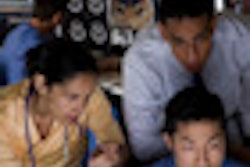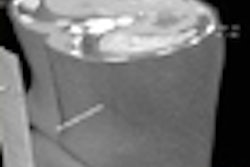
The number of CT scans ordered for residents of Dubai has doubled over the past five years. To keep track of radiation exposure, the Dubai Health Authority utilizes its RIS/PACS to record dose levels.
 An aerial view of Dubai.
An aerial view of Dubai.Radiologists from Dubai and Rashid Hospitals conducted a study of doses recorded for 3,210 adult patients and 176 children who had CT scans performed using one 64-slice and two four-slice CT scanners. They calculated effective doses of head, chest, abdomen, and pelvis exams for both adult and pediatric patients for each of the CT scanners.
Dose length product (DLP) had been recorded for 2,502 adult and 178 pediatric procedures. Average and range of effective doses were calculated using an appropriate weighting factor using the formula:
Effective dose (mSv) = k x DLP
These calculations were compared with those reported by the International Commission on Radiological Protection. Individual accumulated effective doses were calculated for one of the four-slice CT scanners. The adult average effective doses were as follows:
|
The pediatric average effective dose for 127 head CT scans was 1.77 mSv, for 22 chest CT scans it was 3.3 mSv, and for 27 abdomen/pelvis CT scans it was 6.16 mSv. These were classified according to four age groups.
The audit identified that the PACS dose reporting formats were not the same at the two hospitals, according to lead author Dr. Jamila Salem AlSuwaidi, PhD, a consultant medical physicist at Dubai Hospital, and colleagues. The formats were subsequently changed to be consistent.
The audit also showed that one scanner was within international dose levels while the other two scanners were higher. Technical actions were recommended and made to standardize the dose levels.
One of the four-slice scanners produced radiation exposure doses for pediatric patients having head CT scans that were higher than those incurred by adult patients. Actions have been taken to implement dose reduction techniques for all pediatric patients.
The researchers also learned that the accuracy of PACS dose reporting was compromised by the fact that some of the combined studies were reported as a single exam and that typing mistakes were made. They hope to initiate an automated DLP recording system to prevent such mistakes from happening and to guarantee that all dosimetry data were calculated.
Finally, the audit will serve as a benchmarking tool to compare CT scanners at other radiology departments in the United Arab Emirates.



















